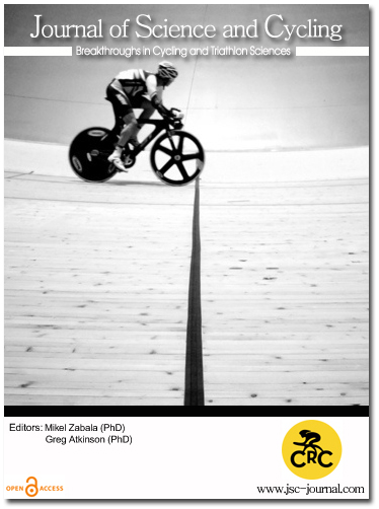Joint specific power is not affected by changes in hand position in recreational and elite cyclists.
Abstract
Cycling is a sport where the majority of the external power produced is used to overcome air resistance. Cycling with an optimized aerodynamic position has been shown to greatly improve time trial performance 1. However, although reducing frontal area of a cyclist will reduce the air resistance which must be overcome, there is less knowledge on the effect of these changes in position on technique. Lowering the position has been shown to 0influence muscle activation and lead changes in force effectiveness 2,3 but the effect of changing hand position on joint specific power has, to the best of our knowledge, not been investigated. Additionally, elite cyclists may be more accustomed to riding in aerodynamic position compared to recreational cyclists because they likely utilize an aerodynamic position to a greater extent in their efforts to achieve optimal performance.
The purpose of the present study was to investigate the effect of different hand positions on joint specific power in the hip knee and ankle joints in addition to investigate potential differences between recreationally trained and elite cyclists.
Methods
Nine elite and nine recreational cyclists completed a total of 9 cycling stages using 3 different intensities (i.e. 100W, 200W and a work rate corresponding to the predetermined lactate threshold) and 3 different handgrip positions (i.e. tops, hoods, drops). All cycling was done using a freely chosen cadences with the participants private bikes mounted on a trainer. Joint specific power was calculated using kinematic measurements from a 3D motion capture system and pedal forces recorded from clipless pedals equipped with force cells.
Results
Preliminary analyses indicate that increasing the external work rate led to increased contribution of the hip joint contribution and decreased contribution of the knee joint for both the recreational and elite cyclists (p < 0.05). No effect of external work rate was found for the ankle joint. There was no effect of hand position on the joint contribution to external power in any of the groups but the elite group had increased hip joint contribution at the hoods position at the intensity corresponding to lactate threshold (p < 0.05).
Discussion and Conclusions
The results of the present study indicates that riding on the tops, hoods or drops have little impact on joint specific power in the hip, knee and ankle joints and there are no differences between recreational and elite cyclists in the effect of hand position. Technique in the form of joint specific power is not altered by utilizing a more aerodynamic position in elite or recreational cyclists.
Downloads
Published
How to Cite
Issue
Section
Copyright (c) 2018 Journal of Science and Cycling

This work is licensed under a Creative Commons Attribution-NonCommercial 4.0 International License.
Authors contributing to Journal of Science and Cycling agree to publish their articles under a Creative Commons CC BY-NC-ND license, allowing third parties to copy and redistribute the material in any medium or format, and to remix, transform, and build upon the material, for any purpose, even commercially, under the condition that appropriate credit is given, that a link to the license is provided, and that you indicate if changes were made. You may do so in any reasonable manner, but not in any way that suggests the licensor endorses you or your use.
Authors retain copyright of their work, with first publication rights granted to Cycling Research Center.






